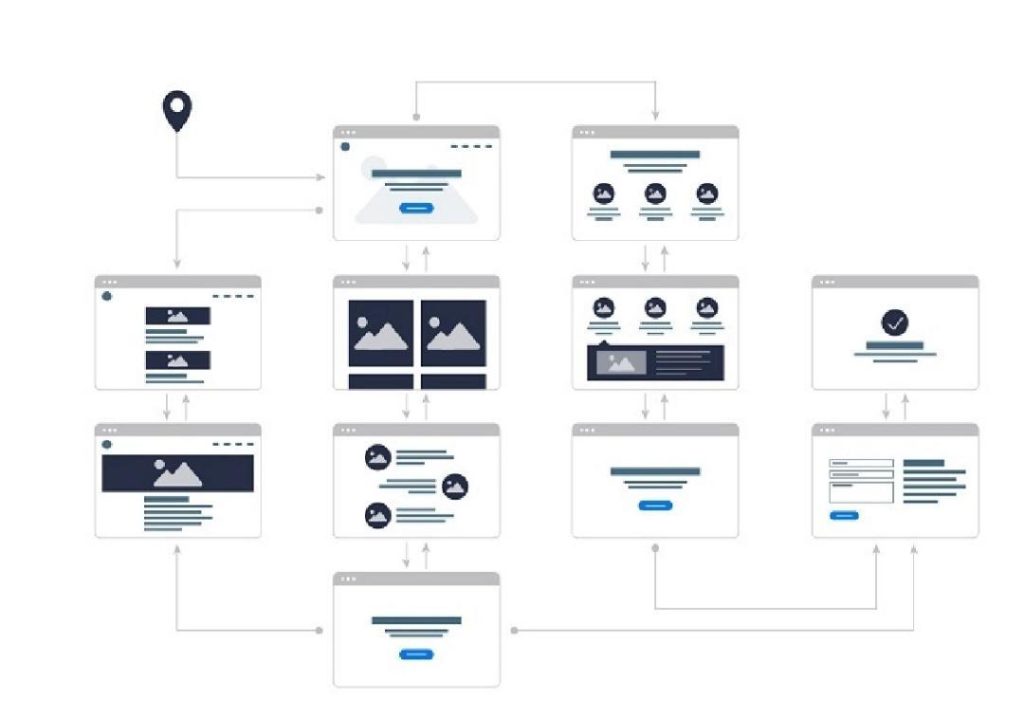
How does mapping user journeys improve website optimisation?
In today’s digital landscape, understanding the user journey is crucial for businesses to stay ahead of the competition. The user journey refers to the path a user takes when interacting with a website, from the initial landing page to the final conversion. By mapping this journey, brands can identify areas of friction, optimise conversion paths, and ultimately improve the overall user experience. In this article, we will delve into the importance of mapping user journeys and how it can lead to improved website optimisation.
Understanding the User Journey
The user journey is a complex and multi-faceted process that involves various touchpoints and interactions with a website. It begins with the user’s initial awareness of the brand, followed by a series of interactions, including searching, browsing, and engaging with content. The journey culminates in a conversion, such as making a purchase, filling out a form, or subscribing to a newsletter. By understanding the user journey, businesses can identify pain points, areas of friction, and opportunities to improve the user experience.
Identifying Friction Points
Friction points are areas of the user journey where users may encounter difficulties, become frustrated, or abandon the process altogether. These points can include slow loading times, confusing navigation, or unclear calls-to-action (CTAs). By identifying friction points, businesses can take steps to eliminate or mitigate them, creating a smoother and more seamless user experience. For example, a company may discover that its checkout process is too lengthy or complicated, leading to a high abandonment rate. By streamlining the checkout process, the company can reduce friction and increase conversions.
Optimising Conversion Paths
Conversion paths refer to the series of steps a user takes to complete a desired action, such as making a purchase or filling out a form. By optimising conversion paths, businesses can increase the likelihood of conversions and improve the overall user experience. This can involve simplifying the navigation, reducing the number of steps required, or providing clear and concise instructions. For instance, a company may find that its conversion path involves too many steps, leading to a high drop-off rate. By reducing the number of steps or providing a clear and concise guide, the company can increase conversions and improve the user experience.
Tracking Behavior
Tracking user behavior is critical to understanding the user journey and identifying areas for improvement. This involves monitoring metrics such as landing page engagement, CTA click-through rates, and exit rates. By analysing these metrics, businesses can gain insights into user behavior and identify patterns or trends that may indicate areas of friction or opportunity. For example, a company may discover that its landing page has a high bounce rate, indicating that users are not finding the content relevant or engaging. By revising the landing page content or design, the company can improve engagement and reduce bounce rates.
Pairing Data with Behavioral Insights
When data is paired with behavioral insights, marketers can gain a deeper understanding of user behavior and preferences. This involves combining quantitative data, such as metrics and analytics, with qualitative data, such as user feedback and surveys. By doing so, marketers can identify trends and patterns that may not be immediately apparent from the data alone. For instance, a company may discover that its users are more likely to convert on certain days of the week or at specific times of the day. By leveraging this information, the company can tailor its marketing efforts to these peak periods, increasing the likelihood of conversions.
Reducing Bounce Rates and Improving Dwell Time
Bounce rates and dwell time are critical metrics that can indicate the effectiveness of a website. A high bounce rate indicates that users are not finding the content relevant or engaging, while a low dwell time suggests that users are not spending enough time on the site. By mapping the user journey and identifying areas of friction, businesses can reduce bounce rates and improve dwell time. This can involve revising the content, improving the design, or providing a more engaging user experience. For example, a company may discover that its blog posts have a high bounce rate due to a lack of engaging visuals or interactive elements. By incorporating more multimedia content, such as videos or infographics, the company can improve engagement and reduce bounce rates.
Converting Curiosity into Committed Engagement
Ultimately, the goal of mapping the user journey is to convert curiosity into committed engagement. This involves creating a seamless and engaging user experience that meets the user’s needs and expectations. By identifying areas of friction, optimising conversion paths, and tracking user behavior, businesses can increase the likelihood of conversions and improve the overall user experience. When data is paired with behavioral insights, marketers can gain a deeper understanding of user behavior and preferences, allowing them to tailor their marketing efforts to specific segments or demographics.
In conclusion, mapping the user journey is a critical component of website optimisation. By understanding the user journey, businesses can identify areas of friction, optimise conversion paths, and improve the overall user experience. By tracking user behavior and pairing data with behavioral insights, marketers can reduce bounce rates, improve dwell time, and convert curiosity into committed engagement. Whether you’re a seasoned marketer or just starting out, understanding the user journey is essential for creating a seamless and engaging user experience that drives conversions and grows your business.
News Source: https://www.growthjockey.com/blogs/user-journey-leads-to-website-optimization






